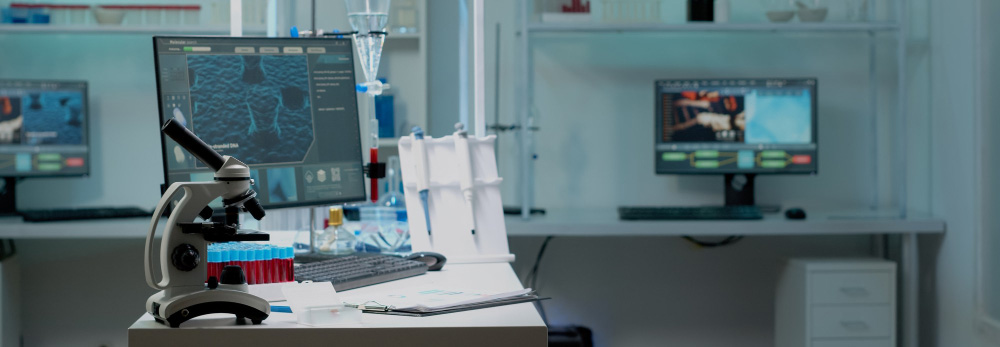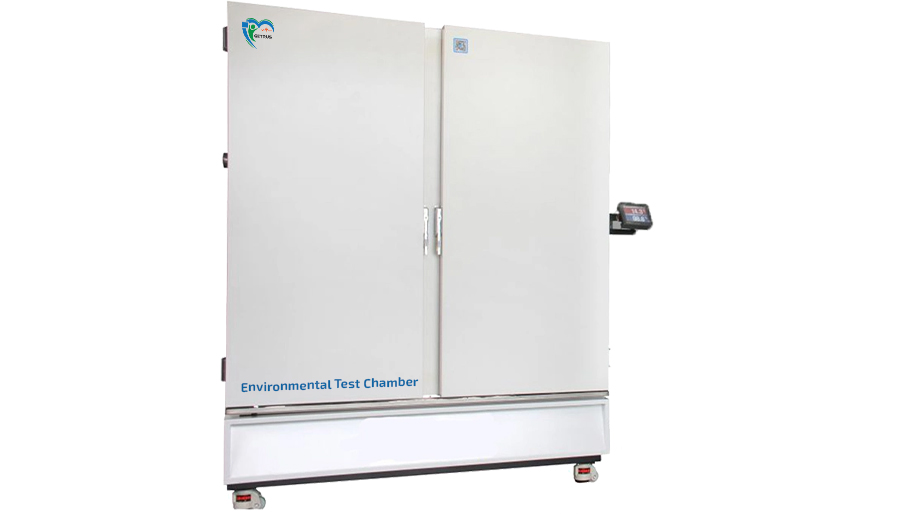

Biosafety Cabinet Class 2
GETRUS Biological Safety Cabinet Class II is an open-front, ventilated cabinet. This cabinet provides a HEPA/ULPA-filtered, recirculated mass airflow within the work space. The exhaust air from the cabinet is also filtered by HEPA/ULPA filters. Thus, the Class II biosafety cabinet will provide personnel, environment and product protection. While HEPA/ULPA filters are effective for trapping particulates and infectious agents, these filters will not capture volatile chemicals or gases
The use of a Biological Safety Cabinet Class 2 in the microbiological laboratory offers the additional capability and advantage of protecting materials contained within it from extraneous airborne contaminants. This capability is provided by the HEPA-filtered, recirculated mass airflow within the workspace.
It is suitable for the containment of biohazardous materials and unlike the Class I biosafety cabinet, it is also suitable as a sterile environment for cell cultures.
Categories:
About 90% of all biosafety cabinets installed are Type A2 cabinets. There is a limited need for Class II Type B biological safety cabinets. In addition, Class II Type B biological safety cabinets require very specific installation and operating conditions to function correctly.
4 categories are as follows:
Class II, type A1: This does not have to be vented, which makes it suitable for use in laboratory rooms which cannot be ducted. This cabinet is acceptable for use of low to moderate risk agents in the absence of volatile toxic chemicals and volatile radionuclides.
Type A, has a minimum inflow velocity of 75 ft/min. The filtered makeup air is divided equally over the work surface at about two to six inches above the work surface. Exhaust is drawn at the bottom of the cabinet where it rises to the top. At the top of the cabinet, 70% of the air recirculates through the supply HEPA filter, the other 30% of air exhausted through the exhaust HEPA/ULPA filter.
This type is not safe for work with hazardous chemicals except when ducted, usually with a “thimble” or canopy hood to avoid disturbing internal air flow.
Class II, type A2: this must be vented. 70% of the air is exhausted from the cabinet while 30% is recirculated. This cabinet may be used with etiologic agents treated with minute quantities of toxic chemicals and trace quantities of radionuclides that will not interfere with work if recirculated in the down flow air.
The Type A2 cabinet, has a minimum inflow velocity of 100 ft/min. A negative air pressure plenum surrounds all contaminated plenums that are under positive pressure. In other respects, the specifications are identical to those of a Type A1 cabinet.
Class II, type B1: this cabinet must be vented, with 30% of the air exhausted from the cabinet while 70% is recirculated back into the room. This cabinet may be used with etiologic agents treated with minute quantities of toxic chemicals and trace amounts of radionuclides required as an adjunct to microbiological studies if work is done in the directly exhausted portion of the cabinet, or if the chemicals or radionuclides will not interfere with the work when recirculated in the down flow air.
The Type B1 cabinets have a minimum inflow velocity of 100 ft/min
Class II, type B2: this cabinet must be totally exhausted, with100% of the air exhausted through a dedicated duct. This cabinet may be used with etiologic agents treated with toxic chemicals and radionuclides required as an adjunct to microbiological studies. The Type B1 cabinets have a minimum inflow velocity of 100 ft/min.
Features:
- Airflow and lighting interlock
- Motorized front window
- Manually adjusted air speed
- Slanted front door to have better access in working area
- Universal caster with brakes and levelling feet
- High efficiency and lower power consuming ECM motor with adjustable speed
- Drain valve for easier cleaning
- Two HEPA filter and filter life indicated on display screen
- Alphanumeric LCD screen displays
- Spare extraction fan for long exhaust ducting
- High reliability
- Low maintenance
- Floor Standing and table top models available.
- Microprocessor based control(HMI+PLC optional)
- Reliable
- Precise Control of Environmental
- Aesthetically designed
- Corrosion Resistant interior and exteriors
- Sturdy Construction
- Many other optional accessories can be provided
Specification:
| Tested Opening | Safety height 254 mm (10 inch) |
| Air flow Volume | In flow: 587 m3/h (346 cfm) Down flow: 60%: 863 m3/h (508 cfm) Exhaust: 40%: 587 m3/h (346 cfm) |
| Front Window Thickness | ≥ 5 mm |
| HEPA Filter | Two, 99.999% efficiency at 0.3 um |
| Filter Guard Type | Aluminium alloy frame |
| Noise | NSF 49 ≤ 61 dB/EN 12469 ≤ 58 dB |
| Illumination | ≥ 1000 Lux |
| Display | LCD Display |
| Waterproof Socket | Two Total consumption: ≤ 500 W |
| Tap | Water tap × 1, Gas tap × 2 |
| Ground Resistance | ≤ 0.10 Ω |
| Power Supply | AC 220 V ± 10%, 50/60 Hz; 110 V ± 10%, 60 Hz, Full load Amps: 9A, BTU/Hr: 1690 |
| Consumption | 400 W |
| DC Motor | One ECM motor, 110V & 220V acceptable, Speed adjustable |
| Material | Working area: 304 stainless steel Frame and Decorative Plate: cold-rolled steel with anti-bacteria power coating. |
| UV Lamp | 30 W Emission of 253.7 nanometers |
| Illumination Lamp | 18 W ×2 |
| Packaging Dimension (W×D×H) | 1540×1080×1900 mm |
| Weight | 340 kg |
Product Categories
Check out our huge range of product types. We've got special fixes and exact lab gear for all your science needs. Our big lineup stands out – it's top-notch and clever.








